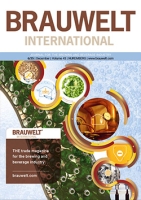As in previous years we would like to demonstrate how the contribution of hop oils to beer can vary from one crop year to another. We have chosen linalool as a representative hop aroma substance as it correlates well with the sensory impression of hoppy aroma in beer.
Until now, the only way to produce gluten-free beers was using gluten-free raw materials such as millet, buckwheat, rice or corn. The taste of these products is not comparable to that of beer brewed in the traditional way. A special technology, developed and patented by Doehler, now makes it possible to remove virtually all the gluten from traditionally-brewed beer. All that remains in the end product is traces of gluten so low that the beers can be marketed as “gluten-free”. Their taste is indistinguishable from that of conventional beers.
The 2015 Hopsteiner Guidelines are ready and will be available at BrauBeviale 2015 in Nuremberg.
The small city of La Quinta is located approximately 200 km east of Los Angeles in Riverside County in the US State of California. Due to its warm temperatures year round, La Quinta enjoys popularity as a seasonal home for inhabitants of more northern states, who flock to the area to escape the winter chill. With more than 20 golf courses, the city is also a familiar destination for golfers. La Quinta has also been known to brewers and maltsters since 2009, when the 122nd MBAA meeting was held there. This provided a perfect opportunity for attendees to combine work at the conference with the leisure activities offered at the desert location. This year, the American Society of Brewing Chemists convened at the La Quinta Resort & Club from June 14th to 17th.
Water comes from the tap or from one’s own well. What more do we know about our water in Germany? That it has to meet the German Drinking Water Ordinance when it is for consumption and that we have enough water in Germany. But is that sufficient? Should we not be a little more circumspect about the quality of our most important raw material?
Viking Malt, one of the leading malting companies in Northern Europe, and Colorado Malting Company (CM) from the United States will start a cooperation to bring original American craft malts to European breweries, according to statements published September, 24th. Starting in spring 2016, this new collaboration contract gives Viking Malt a license to produce CM’s craft malts for European markets. The craft beer boom that has taken Europe by storm has always been greatly influenced by the US beer culture. However, until now, the availability of American malts has been limited in Europe. With this collaboration, Viking Malt is specifically targeting the rapidly growing European craft brewery sector. “This collaboration gives us a chance to offer also American craft malts throughout Europe..
Crop 2015 estimates for Germany were finalized in the Hallertau growing area on 25 August 2015. We enclose a comparison of crop 2014 results with crop 2015 estimates for the world’s most important growing areas.
The licensing fee for the hop variety Polaris (DEPA) will be dropped with effect from crop 2015 onwards. Consequently, Polaris may now be considered as an alternative bittering variety. Therefore, at this year’s Hopsteiner Forum in July 2015 a selection of two Pils beers were presented to an audience of brewers and brewing scientists to show the impact on bitter quality by using either Polaris or Herkules (DEHS). Both varieties were exclusively used as a bittering dosage at the beginning of boiling. The analytical data of these two beers are shown in table 1.
Brewers who dry hop are trying to incorporate hop essential oils into their beer. However, little has been reported about non-volatile hop compounds that also dissolve into beer when one dry hops. In our June 2015 Newsletter we mentioned that after 5 days of dry-hopping Humulinones, a hop bitter acid about 65 % as bitter as isoalpha acids, readily dissolves into beer. In this Newsletter we report the concentration and utilization of Alpha Acids, Beta Acids, Humulinone, Hulupone, Xanthohumol, and Desmethylxanthohumol when a 51 IBU beer is dry-hopped with Cascade hop pellets for five days using a dose rate of 0, 0.5, 1.0 and 2 lbs of Cascade hop pellets per barrel of beer. Table one contains the complete analysis of the Cascade hop pellets analyzed the day of dry-hopping. Table 2 contains the anaylsis of the control beer along with the dry hopped beers.
Humulinones are similar in structure and about 65 % as bitter as iso-alpha acids – see Newsletter
The planting decisions for spring barley in European countries were different this year: While some regions had an increase in acreage, others had to reduce their acreage further.


